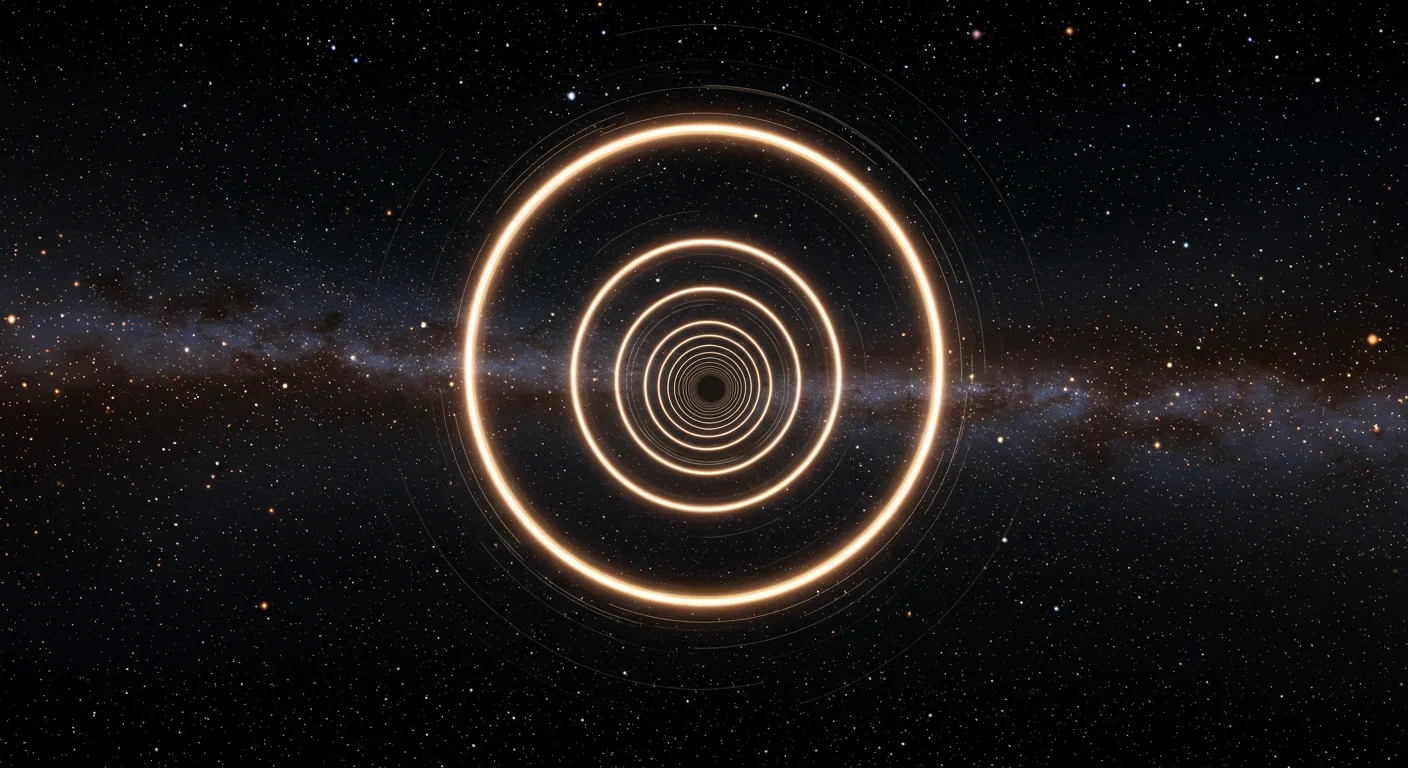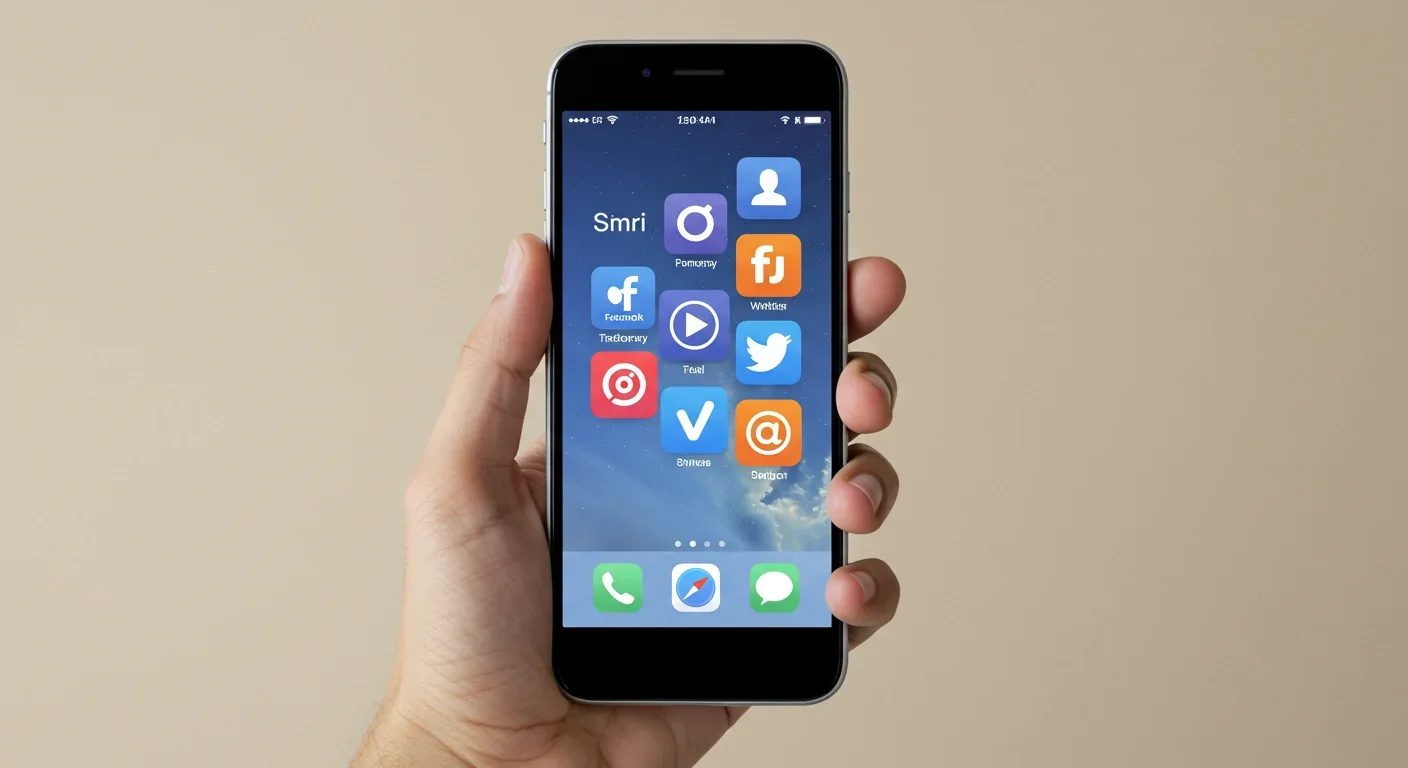AI Genomic Forecasting Predicts Next Pandemic Outbreak

TL;DR: Scientific studies reveal electromagnetic hypersensitivity sufferers experience genuine symptoms but cannot detect EMF exposure better than chance, pointing to the nocebo effect rather than electromagnetic fields as the primary cause.

Your neighbor moved to a remote cabin in Montana, fleeing what she calls "electromagnetic radiation poisoning." Your coworker requested an office far from the WiFi router, claiming severe headaches. Online forums host thousands claiming sensitivity to the invisible fields surrounding smartphones, cell towers, and wireless networks. They describe debilitating symptoms—migraines, fatigue, cognitive fog, dizziness—that vanish when they escape modern technology's electromagnetic embrace.
Their suffering is undeniably real. But after examining 40 double-blind scientific studies, researchers have reached a startling conclusion: people claiming electromagnetic hypersensitivity cannot actually detect electromagnetic fields better than random chance. The symptoms are genuine, measurable, and sometimes severe. The attributed cause, however, appears to be wrong.
This disconnect reveals something profound about the human mind-body connection—and raises urgent questions about how we accommodate suffering when the science contradicts lived experience.
Electromagnetic hypersensitivity (EHS), also called idiopathic environmental intolerance attributed to electromagnetic fields (IEI-EMF), describes a condition where individuals report physical symptoms when exposed to electromagnetic radiation from WiFi routers, cell phones, power lines, and other wireless devices.
Prevalence estimates vary wildly across countries—from 1.5% in Sweden to 13% in Taiwan—though these figures rely entirely on self-reported surveys with no objective biomarker confirmation. The reported symptoms include:
For those experiencing these symptoms, the correlation with proximity to electromagnetic sources feels undeniable. Turn on a WiFi router, symptoms appear. Move to a low-EMF zone, relief follows. This cause-and-effect relationship seems self-evident.
Except when scientists test it under controlled conditions, the relationship vanishes.
The gold standard for testing EHS involves double-blind provocation studies. Researchers expose participants claiming electromagnetic sensitivity to real and sham (fake) electromagnetic fields without telling them which is which. If EHS sufferers possess genuine electromagnetic sensitivity, they should report more symptoms during actual exposure than during sham exposure.
A systematic review published in 2024 analyzed 40 such studies and found consistent results: under blinded conditions, people with self-reported EHS cannot identify exposures better than chance, nor do their symptom experiences differ from control populations.
In a 2018 study described by Healthline, participants with self-diagnosed EHS were exposed to electromagnetic fields from mobile and radio systems alongside fake signals. The results were striking: participants reported more symptoms when they thought each station was on—whether it actually was or not. Their inability to distinguish real from sham exposure suggests something other than electromagnetic fields triggers their very real symptoms.
This pattern repeats across decades of research. When participants know they're being exposed—called "open provocation"—symptoms reliably appear. When they don't know—double-blind conditions—symptoms correlate with belief, not reality.
Enter the nocebo effect, the placebo effect's darker twin. While placebos demonstrate how positive expectations can improve health, nocebos reveal how negative expectations can create genuine physical symptoms.
Recent research published in eLife found that nocebo effects are actually stronger and more persistent than placebo effects in healthy individuals. The expectation of harm can generate measurable physiological responses—increased heart rate, elevated stress hormones, genuine pain—even in the complete absence of the supposed harmful stimulus.
Think about motion sickness. If you believe a boat ride will make you nauseous, that belief alone can trigger genuine nausea through anticipatory anxiety and heightened attention to bodily sensations. The nausea is real. The boat's motion may not be the actual cause.
With electromagnetic hypersensitivity, the mechanism appears similar. Media reports warning of WiFi dangers, online communities sharing symptom stories, and even well-meaning news coverage can create expectations that electromagnetic fields cause harm. Once that expectation forms, the brain becomes hypervigilant, scanning for confirming evidence.

Frontiers research on modern health worries reveals a troubling paradox: people who perceive high electromagnetic sensitivity adopt extensive avoidance behaviors—shielding homes, discarding phones, relocating to rural areas—yet still report feeling highly exposed. The study found that avoidance strategies beyond a certain point don't reduce perceived exposure because the issue isn't actually electromagnetic fields but cognitive expectations and anxiety.
This doesn't mean EHS sufferers are faking or that symptoms are "all in their head." Nocebo-induced symptoms involve real neurological and physiological processes. Brain scans show actual changes in pain-processing regions. Stress hormones measurably elevate. The suffering is legitimate.
The misattribution of cause, however, has profound implications.
If electromagnetic fields at environmental levels genuinely caused EHS symptoms, scientists should be able to identify a biological mechanism or biomarker. Decades of research have searched for such evidence without success.
According to the International Commission on the Biological Effects of Electromagnetic Fields, no robust empirical evidence shows EMF exposure causes symptoms beyond background variability at regulatory limits. Studies searching for physiological biomarkers—changes in heart rate variability, cortisol levels, brain activity, immune markers—have consistently failed to find associations between actual electromagnetic exposure and these measures in EHS populations.
This absence of evidence doesn't prove electromagnetic fields have zero biological effects at any dose. Research continues into potential mechanisms at the cellular level. But the current scientific consensus holds that typical environmental exposures from WiFi, cell phones, and similar devices don't trigger the acute symptoms EHS sufferers report.
One Frontiers study notes that current group-level provocation studies may be insufficient for detecting subtle or individualized electromagnetic-related changes. Future research using single-case repeated design might reveal patterns missed by broader studies. Science remains open to new evidence.
For now, though, the biological mechanism remains elusive.
If electromagnetic fields don't cause EHS symptoms, what does? Research points to several possibilities that often overlap:
Anxiety and stress disorders: Many EHS sufferers show elevated baseline anxiety and heightened health worry profiles. The modern environment presents countless potential stressors. Attributing diffuse symptoms to a specific cause—electromagnetic fields—can provide psychological relief through creating a coherent narrative, even if that narrative is scientifically unsupported.
Pre-existing medical conditions: Symptoms attributed to EHS often mirror those of chronic fatigue syndrome, fibromyalgia, multiple chemical sensitivity, and other poorly understood conditions. Some individuals may experience these underlying conditions while misattributing cause to electromagnetic exposure.
Environmental factors: Indoor air quality, lighting flicker, noise pollution, ergonomic issues, and chemical exposures can all produce symptoms similar to reported EHS. A person blaming WiFi for headaches might actually be responding to poor ventilation or screen glare.
Attention and amplification: Once someone becomes convinced electromagnetic fields cause their symptoms, selective attention kicks in. They notice symptoms more when near devices, ignore symptom-free periods, and unconsciously amplify minor sensations into confirmatory evidence. This isn't conscious fabrication—it's how human pattern-recognition works.
Social contagion: Research on modern health worries suggests that communities sharing symptom experiences can reinforce beliefs and even spread symptom patterns through social learning. Online forums dedicated to EHS may inadvertently strengthen nocebo responses through shared narratives of harm.
Understanding these alternative explanations isn't about dismissing suffering. It's about directing help toward interventions that actually work.
Here's the hopeful part: effective treatments for EHS symptoms exist and work independently of whether electromagnetic fields are the true cause.
Cognitive behavioral therapy (CBT) has shown beneficial results for patients anxious about electromagnetic exposure. CBT helps people examine the evidence for their beliefs, reduce hypervigilance to bodily sensations, and develop coping strategies for anxiety. Importantly, CBT doesn't require patients to abandon their beliefs—it simply provides tools to manage distress.
Exposure therapy, carefully conducted, can help desensitize fear responses. Gradual, controlled exposure to electromagnetic sources in a safe therapeutic context can break the association between devices and symptom onset.
Addressing underlying conditions: Thorough medical evaluation can identify treatable conditions that might be causing symptoms. Sleep disorders, vitamin deficiencies, hormonal imbalances, and chronic pain syndromes all warrant investigation.
Environmental modifications: Even if electromagnetic fields aren't the culprit, reducing actual environmental stressors helps. Improving air quality, optimizing lighting, addressing noise pollution, and creating calming spaces can reduce overall symptom burden.
Stress management: Meditation, exercise, proper sleep hygiene, and social connection all reduce baseline stress and anxiety, which in turn reduces symptom severity regardless of attributed cause.
A Swiss counseling program for EHS patients provides an interesting model. The program validates patients' suffering while offering comprehensive assessment and treatment for symptoms rather than focusing narrowly on electromagnetic exposure. Notably, only 60-70 individuals per year sought help through the program—a tiny fraction of Switzerland's population that might self-identify as electromagnetic-sensitive, suggesting that symptom burden severe enough to seek medical intervention is relatively rare.
Electromagnetic hypersensitivity creates thorny policy questions. How should employers, schools, and public institutions respond to accommodation requests when scientific evidence doesn't support the claimed sensitivity?
The Environmental Health Trust has compiled resources advocating for electromagnetic-sensitive individuals, noting that some jurisdictions recognize EHS as a disability requiring accommodation. Yet what form should those accommodations take?
Installing expensive electromagnetic shielding, removing WiFi networks, or creating "electromagnetic-free" zones imposes costs and inconvenience on others for interventions unlikely to address the true cause of symptoms. Moreover, such accommodations might reinforce nocebo beliefs, potentially worsening symptoms long-term by strengthening the perceived connection between electromagnetic exposure and illness.
Research suggests that accommodations should focus on individual symptom burden rather than assumed electromagnetic sensitivity. This might mean:
The challenge lies in being compassionate toward genuine suffering while not enabling beliefs that may harm the individual long-term or create unsustainable precedents.

For the estimated 1-10% of people who identify as electromagnetic-sensitive, the scientific consensus can feel invalidating. "You're telling me my suffering isn't real" is the natural response. But that's not what the science says.
The science says: your symptoms are real; your attribution of cause appears to be incorrect.
This distinction matters tremendously. Accepting that electromagnetic fields likely aren't causing symptoms opens doors to interventions that actually help. Clinging to electromagnetic attribution may lead to increasingly restrictive avoidance behaviors that don't improve symptoms while dramatically limiting quality of life.
For the broader public, EHS serves as a powerful reminder of the nocebo effect's potency. Sensationalized media coverage warning of electromagnetic dangers can create anxiety that manifests as genuine symptoms. Responsible science communication requires balancing legitimate safety discussions with avoiding unnecessary fear.
For policymakers, EHS demands evidence-based compassion: validating suffering, supporting affected individuals, and directing resources toward interventions proven to help, rather than expensive electromagnetic mitigation measures unlikely to address root causes.
And for researchers, electromagnetic hypersensitivity represents an ongoing scientific puzzle. While current evidence strongly points away from electromagnetic fields as the primary cause of symptoms, science remains open to new discoveries. Perhaps future research will identify subpopulations with genuine electromagnetic sensitivity, or reveal mechanisms current methods miss.
Electromagnetic hypersensitivity teaches us something profound about the human condition: belief shapes biology in powerful ways we're only beginning to understand. The nocebo effect isn't weakness or gullibility—it's a fundamental feature of how our nervous systems process threats.
Our brains evolved to detect and avoid danger. In an environment filled with invisible, poorly understood electromagnetic fields, it's entirely logical that some people's threat-detection systems would identify these fields as hazardous. Once that identification occurs, genuine physiological responses follow.
The solution isn't to mock or dismiss electromagnetic-sensitive individuals. It's to understand the sophisticated mechanisms generating their symptoms and direct them toward evidence-based interventions.
Their experience also reminds us that subjective experience and objective reality don't always align. We can suffer intensely from misattributed causes. We can feel absolutely certain about connections that don't exist under controlled testing. And we can benefit tremendously from understanding when our intuitions about our own bodies lead us astray.
In a world where technology permeates every space, where health information floods from countless sources (reliable and otherwise), and where anxiety about invisible threats finds ready amplification online, electromagnetic hypersensitivity may be a harbinger. As new technologies emerge—5G networks, smart home devices, ubiquitous sensors—will we see new waves of technologically-attributed symptoms?
The question facing us is whether we'll learn to distinguish genuine risks from nocebo-driven fears, and whether we can build systems that validate suffering while guiding people toward solutions that actually work.
For those suffering today, the message is clear: your symptoms deserve serious attention and effective treatment. The electromagnetic fields probably aren't causing them. But that means better solutions exist than fleeing to a cabin in the woods. Understanding the true mechanisms behind your suffering is the first step toward relief.

Wormholes collapse instantly because they require exotic matter with negative energy that doesn't exist in useful quantities, and quantum instabilities destroy them faster than light can cross their throats, making spacetime shortcuts a physics impossibility.

Scientific studies reveal electromagnetic hypersensitivity sufferers experience genuine symptoms but cannot detect EMF exposure better than chance, pointing to the nocebo effect rather than electromagnetic fields as the primary cause.

Mycelium packaging grows from agricultural waste in days, decomposes in weeks, and is already shipping in Dell computers and IKEA furniture—proving fungi can replace foam.

Our attraction to impractical partners stems from evolutionary signals, attachment patterns formed in childhood, and modern status pressures. Understanding these forces helps us make conscious choices aligned with long-term happiness rather than hardwired instincts.

Virtual reality experiments are revealing how honeybees form sophisticated cognitive maps with brains smaller than sesame seeds, revolutionizing our understanding of intelligence and inspiring energy-efficient robots while guiding pollinator conservation.

Millions of student loan borrowers are refusing to repay as an organized protest against a $1.77 trillion debt system they view as exploitative. With one in three borrowers at risk of default by 2025, this movement challenges whether the entire higher education financing model can survive.

Blockchain-based social networks like Bluesky, Mastodon, and Lens Protocol are growing rapidly, offering user data ownership and censorship resistance. While they won't immediately replace Facebook or Twitter, their 51% annual growth rate and new economic models could force Big Tech to fundamentally change how social media works.